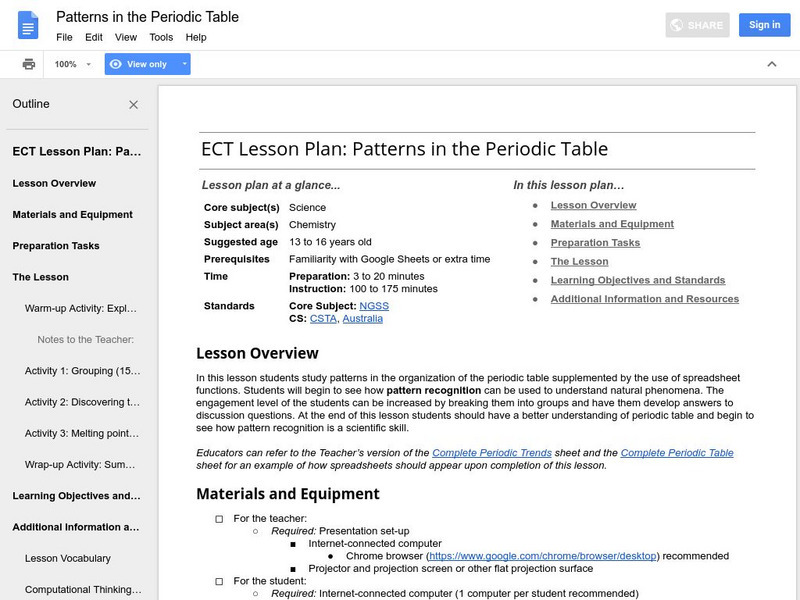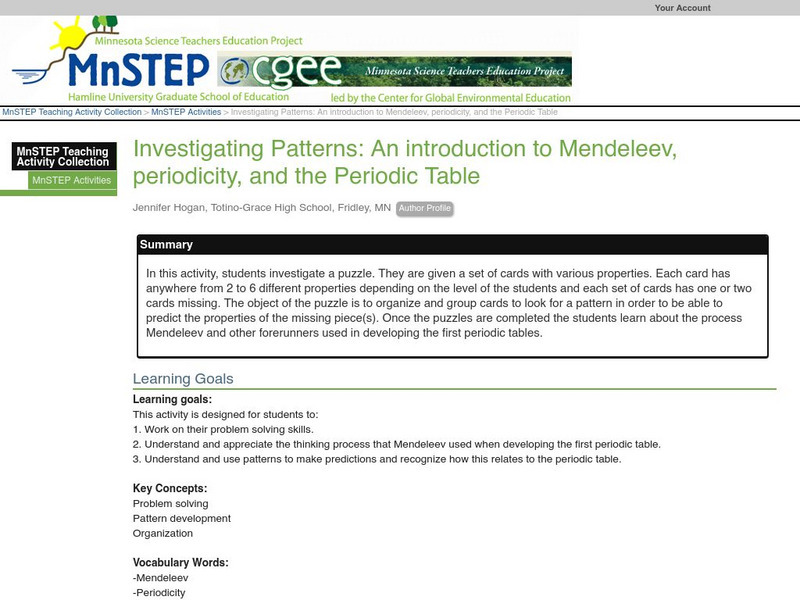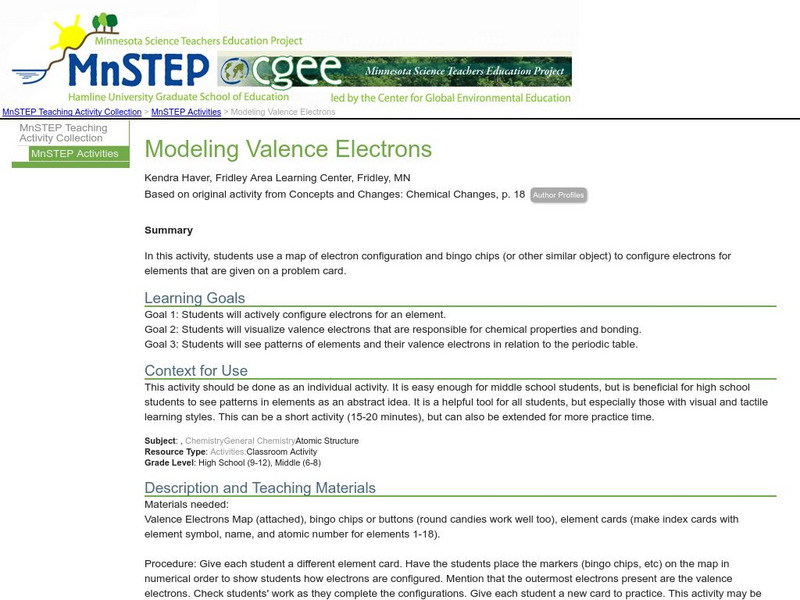Hi, what do you want to do?
Curated OER
Classifying Functions
Eleventh graders sort different types of functions including rational, periodic, exponential, polynomial, quadratic, logarithmic and linear using "function cards." The functions are displayed in multiple representations including...
Curated OER
Database Detectives Hold an Election ~ Part 3
Students use a database to conduct a schoolwide election. They discover the importance of voting and democracy. They incourage one another to vote.
Curated OER
You Mean I Am Part of History?
Fourth graders open the lines of communication between family members and to gain a historical understanding about family history. They research and interview their grandparents and parents and create a research paper.
Curated OER
Chemical Formulas
Learners assess how to go from writing ionic chemical formulas to nomenclature and naming chemical compounds. They brainstorm former studies and share their thoughts in small groups. A list of everyday products (shampoos, toothpaste,...
Curated OER
Chemistry: Balancing Chemical Equations
Eighth graders practice balancing chemical equations. In this chemistry instructional activity, 8th graders explain why it is necessary to balance equations. They complete practice worksheets individually.
Curated OER
Of Electron Bondage
Students create models of ionic and covalent electronic bonds to demonstrate their understanding of these chemistry concepts. They explain how both ionic bonds and covalent bonds work so that younger students can understand.
Curated OER
Pounds of Pollution
Students examine pollutants and investigate air pollution emitted by a car in a year. In this air pollution lesson students complete an activity and make calculations.
Curated OER
Expensive Choices
Eighth graders work in pairs to discover how to prioritize expenses in a budget.
Curated OER
Physical and Chemical Changes
Eighth graders view a PowerPoint presentation that assist them in distinguishing between physical and chemical changes. They compare their observations of demonstrations to a list of clues recognizing types of changes.
Curated OER
A Natural Habitat: What, How and Why
Students understand what a habitat is. They determine why a habitat is important to our environment no matter where it is located. Students observe and recognize natural habitats in their surroundings.
Google
Google for Education: Patterns in the Periodic Table
Students study trends in the periodic table of elements, supplemented by the use of spreadsheet functions. The spreadsheet functions presented can be used on any data set.
Alabama Learning Exchange
Alex: Who Wants to Know the Periodic Table?
The purpose of the project is to help the young scholars gain an in depth knowledge of the Periodic Table of Elements. The periodic table is the very backbone of chemistry. In order for the students to be successful in chemistry, they...
Science Education Resource Center at Carleton College
Serc: Valence Electrons and Trends in the Periodic Table
This instructor led activity will produce a partially filled periodic table that contains electron-dot models for the first twenty elements in the appropriate boxes. It will be used as a visual tool for students to connect concepts such...
Utah Education Network
Uen: Periodic Table Model
Learners will use "element" cards to organize into a periodic table, using the symbols on the card.
Alabama Learning Exchange
Alex: Periodi Cally Used Elements
This lesson explores the various uses of elements in the periodic table. Students will be assigned an element to research. They will then present its uses and atomic information to the class.
Science Education Resource Center at Carleton College
Serc: Investigating Patterns: An Introduction to Mendeleev
In this activity, learners investigate a puzzle. They are given a set of cards with various properties. Each card has anywhere from 2 to 6 different properties depending on the level of the students and each set of cards has one or two...
American Chemical Society
Middle School Chemistry: Finding Volume: Water Displacement Method
Students use the water-displacement method to find the volume of different rods that all have the same mass.
Science Education Resource Center at Carleton College
Serc: Modeling Valence Electrons
In this activity, students use a map of electron configuration and bingo chips to configure electrons for elements that are given on a problem card. Students will see patterns of elements and their valence electrons in relation to the...





















